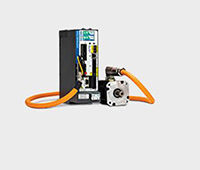US Cotton, a domestic manufacturer of cotton swabs, was considering the replacement of the pneumatic cylinders on one of its major production machines. The application involved picking a layer of cotton swabs out of the assembly section of the machine and placing it in a stack before going into the retail package.
The company was looking for better control and reduced maintenance. Control, because operators had to make frequent adjustments to the machines to compensate for changes in air pressure. Maintenance, because the air cylinders in each of the several dozen machines had to be replaced every one to two months. The company needed an actuator that would last much longer.

After running for more than 18 months on the cotton swab production machine, the linear motors needed no adjustments or replacements. Better control also meant a 35% increase in machine speed.
Cost is always a factor in design, but it’s important to balance cost over benefit. In this case, energy savings can justify the price of the linear motors. But the staff at US Cotton needed convincing.
The company said that it would volunteer machines to use test beds (along with some personnel) if LinMot would provide the equipment needed to perform a test. LinMot agreed. US Cotton chose one of the systems (linear motor and drive) and installed it on a machine to evaluate the technology. After running for more than 18 months, there were no adjustments required and no replacements needed.
For the final test, LinMot and US Cotton enlisted two production machines to perform a side-by-side comparison between a pneumatic cylinder and linear motor. The air for the pneumatic cylinder (and only the single pneumatic cylinder) was supplied from a separate, free-standing air compressor connected directly to the cylinder.
Test administrators used a standard compressor rated at 150 psi, 1.5 hp, 120 Vac, 3.5 cfm (at 90 psi), with a 15 gal tank. The regulator on the compressor was set to 80 psi to match the normal running pressure used on the machine.
To measure the energy used, an Allen-Bradley PowerMonitor 5000 was chosen. This “revenue-accurate” instrument detailed data about energy usage.
The machines were each run for 30 min at a rate of 48 operations per minute. The energy consumed was recorded by the PowerMonitor. For that time, the compressor consumed 1.875 kWh hours of energy. The machine equipped with the linear motor consumed 0.060 kWh. This meant that the linear motor equipped machine consumed only 3.2% of the energy of the pneumatic-cylinder equipped machine.
Because the life of these linear motors can be well over 1 billion cycles, US cotton is expecting many years of trouble-free operation. Better control also meant a 35% increase in machine speed.
LinMot
www.linmot-usa.com
Filed Under: LINEAR MOTION, MOTION CONTROL





Tell Us What You Think!